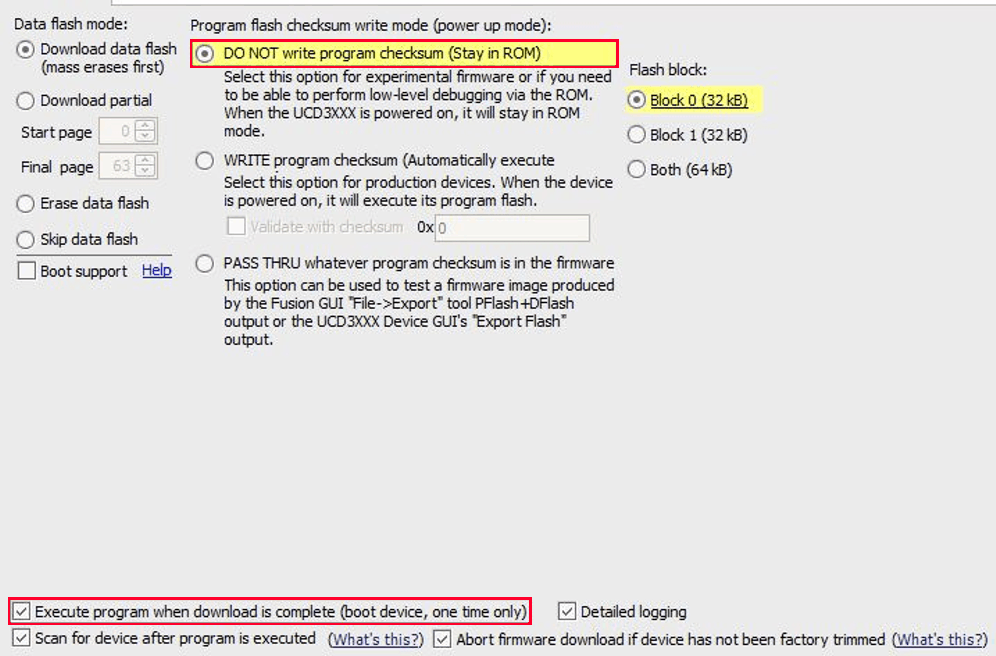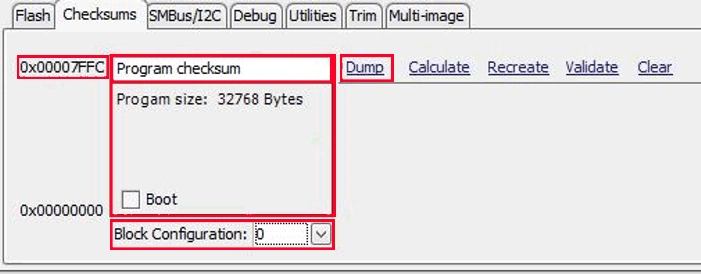SLUAAP5 july 2023 UCD3138 , UCD3138064 , UCD3138064A , UCD3138128 , UCD3138128A , UCD3138A , UCD3138A64
3 How to Avoid a Lockup
To avoid a lockup, follow the three steps:
Step 1: DO NOT write checksum when programming a UCD device if there is a possibility the firmware is not working. While checksum can still jump to pflash for execution after programming, a UCD device can always get back to ROM on reset. Follow the configurations in Figure 3-1.
 Figure 3-1 Programming Without
Checksum
Figure 3-1 Programming Without
ChecksumStep 2: Confirm the expected location of checksum is cleared correctly. Click on the command Command Program to jump to ROM (Send Byte 0xD9 to address xx) to send UCD back to ROM mode.
 Figure 3-2 Jumping to ROM Mode
Figure 3-2 Jumping to ROM ModeStep 3: Go to the Checksums tag. Select the Dump button to read each of the checksums by configuring the Block configuration. Check whether the expected location of checksum is cleared. If cleared correctly, the field shows all zeros.
 Figure 3-3 Verification on Checksum
Value
Figure 3-3 Verification on Checksum
ValueCheck code to confirm the correct checksum is cleared. Once cleared as expected, program UCD device with checksum.